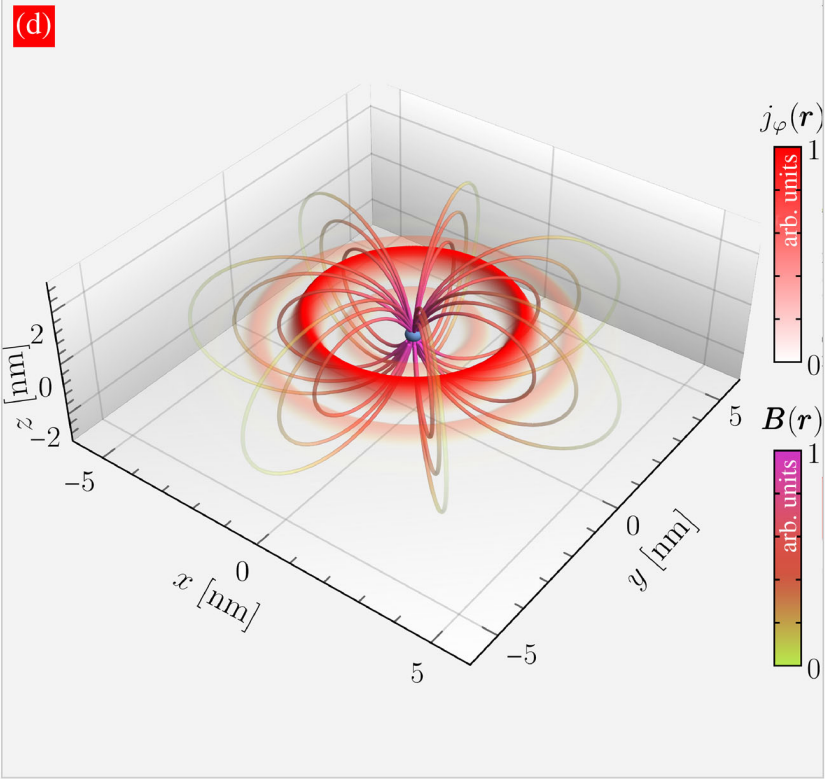纳米尺度的光致磁化现象
磁矩的产生和翻转对于量子信息和自旋电子学均有重要意义,然而,如何无损地在纳米尺度对磁矩进行超快速的控制,仍是一个尚未解决的问题。
最近,研究人员报导了一种新型的使用激光激发磁矩的方法。利用该方法,可以在飞秒的时间尺度内产生原子尺度的环状电流,环状电流对应的磁矩在激光停止后依然保持铁磁排列,并且磁矩的空间分布可通过调整激光参数加以调节。通过调节两束共传导的激光的参数,可以控制其激发的局域磁矩的空间分布、方向及强度。
本实验中,氦原子被紫外和红外的 vortex-beam 激光脉冲激发,从而产生带有电流的 Rydberg 态。激发产生的磁矩使得左旋激光和右旋激光产生的光电子具有不同的能量分布。
目前,该研究内容已作为封面文章发表在 Physical Review Letters 上,量子交叉研究中心 Klavs Hansen 教授为作者之一。

Triggering and switching magnetic moments is of key importance for applications ranging from spintronics to quantum information. A noninvasive ultrafast control at the nanoscale is, however, an open challenge.
The work reports a novel laser-based scheme for generating atomic-scale charge current loops within femtoseconds. The associated orbital magnetic moments remain ferromagnetically aligned after the laser pulses have ceased and are localized within an area that is tunable via laser parameters. Tuning properties of the properties of the light of the two co-propagating lasers used in the method gives us control over the spatial extent, direction, and strength of the induced atomic-scale charge current loops which cause the magnetism.
The helium atoms used in the experiment were driven by an ultraviolet and infrared vortex-beam laser pulses which generated current-carrying states of the Rydberg type. The generated magnetic moments produced a difference in the energy distributions of the electrons that were emitted when exposed to left and right rotating laser light.
参考文献:
[1] Jonas Wätzel et al, Physical Review Letters 128, 157205 (2022).